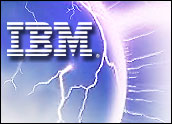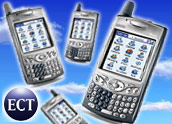
Improving RFID (radio frequency identification) systems for specific applications and industry sectors — along with mandates from governments and large companies with extensive supply chains and logistics needs — is spurring adoption by a wider range of small and medium-sized businesses (SMBs) in the public and private sectors.
SMBs needing to track agricultural products and livestock, as well as hospitals, libraries, the military and other public service organizations, are rolling out RFID systems, as Part 1 of this series illustrates.
Adding to the momentum, the development of open standards that facilitate and lower the cost of using RFID with complementary emerging wireless network technology — such as low power wireless sensors and actuators — hold out the promise of SMBs getting more bang for their RFID and wireless infrastructure investment dollars.
Adoption Inhibitors
To date, RFID is mainly used in large-scale applications, such as in tracking packages and cargo. Its use by SMBs is generally limited to access control, Allen Nogee, principal analyst, wireless technology and infrastructure for In-Stat, told CRM Buyer.
“There has to be an entire ecosystem setup for RFID’s large use in package tracking,” he said. “It’s more than just readers and tags, but the cost of those products is certainly important. I think RFID is being used in many applications. For example, millions of dogs, cats and livestock are tagged each year so they can be tracked, and the majority of car keys for new cars sold in the U.S. contain RFID chips.”
Some of the major obstacles in the past have been a lack of robustness and standards, difficulty of installation and operation, and high cost of integration and application development in the IT domain, Nogee added.
“The inhibitors to wider adoption include the wait-and-see perspective of many who prefer to let others do the innovation, solution complexity, and getting high quality information back from trading partners from the RFID tagged items,” added Scott Borroughs, sensors and actuators solutions strategist at IBM.
Spurring Adoption
Government regulations and mandates from corporations such as Wal-Mart and the big auto manufacturers are spurring RFID adoption in a range of SMBs. Smaller businesses now involved with using the technology include those that are members of larger organizations’ supply chains, such as auto parts and pharmaceutical product manufacturers, shipping and logistics companies and distributors.
IBM has worked with companies large and small to get RFID systems up and running, including Schiff and Pacific Coast Producers, a 180-member, California-based agricultural cooperative and private label packer of premium canned fruits and tomatoes, Burroughs noted.
The focus has moved from being on the end users to designing and applying RFID systems that enable benefits to be realized, as opposed to how the technology works and what it can and cannot do, he said.
“Regulations or mandates create a forcing function against target dates that motivate multiple organizations to implement RFID solutions in a common time frame. This is important because the value is not in the ‘tag,’ it’s in the information flow enabled by RFID. That is where the forcing functions accelerate the network effect of information availability. … The interesting questions are those that go beyond tagging to figure out what they can do with the information to run their businesses better and provide a higher level of service to their customers.”
RFID Down Under
NEC is leveraging its experience in building equipment for telecommunications network to make RFID a “ubiquitous technology that can be adopted by SMEs (small and medium-sized enterprises) and large corporations to improve productivity across a wide range of industries. This will make ordering, provisioning and maintaining RFID readers and systems as simple as opening a broadband or mobile phone account. We are moving RFID toward critical mass,” Kevin Slade, NEC Australia’s RFID product manager, told CRM Buyer.
RFID uptake among SMBs in Australia currently lags a year behind activity taking place in the U.S. due to limited, niche market opportunities and the lack of government catalysts, such as that provided by the U.S. Department of Defense and newly introduced pharmaceuticals tracking requirements in the U.S. NEC has invested millions in RFID research and development centers in Australia and Singapore.
One result is the introduction of the NEC RFID Gateway, “a standalone process ‘automator’ designed for high volume use and large enough to allow forklifts to pass through,” Slade explained.
RFID Gateway has made improvements in readability rates by reducing null points or dead spots inside the radio field, he added.
“This has been achieved by more efficiently reflecting the signal within the required read range, not across the entire range of the antennae,” said Slade. “It is a bit like playing squash vs. playing tennis: In squash, the ball keeps bouncing around the walls while in tennis the ball is always being hit out of the court. The NEC RFID Gateway uses the same amount of energy but significantly improves read results.”
RFID, Sensors and Actuators, and Wireless Networking
Though costs and concerns about systems complexity and the ultimate benefits realized remain barriers to RFID adoption among SMBs, the development of open standards, such as ISO 14443(b) for near-field/proximity networks and the IEEE’s RFC4944 (6LoWPAN) protocol for low power wireless sensor networks (WSNs), as well as its 802.11 and 802.15 internetworking protocols, is making it simpler and cheaper to install RFID systems, as well as to realize greater benefits from them by using RFID in conjunction with wireless sensors and actuators and the Internet.
“The two technologies (RFID and wireless sensors) can definitely be used in combination and in mutually reinforcing roles, such as when there is value in both tracking the identity of an object — what just passed through the warehouse gate is carton of milk XYZ coming from supplier ABC and from milk factory UVW001 — and of its past and present condition — ‘that carton of milk stayed within range of temperatures such and such, was not shaken more badly than this much, was not exposed to chemicals or radiations throughout its journey since the factory,'” explained Roland Acra, president and CEO at Arch Rock.
SMBs interested in improving energy efficiency within premises can use wireless sensor networks to better monitor temperature, humidity, airflow and adjust HVAC or heating systems for more comfort or less waste, Acra continued.
“Similarly, they can use WSN technology for increased security, by deploying motion sensors within premises and contact sensors on doors and windows; or it can improve personnel safety by deploying sensors of human presence near hazardous materials or during hazardous maintenance operations on machinery.”












































Social CRM
See all Social CRM